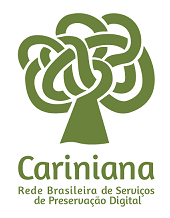PCR e qPCR para detecção de Circovírus Suíno tipo 2 (PCV2) em catetos (Pecari tajacu) e queixadas (Tayassu pecari) de cativeiro do Sul do Brasil
DOI:
https://doi.org/10.5433/1679-0359.2016v37n6p4167Palavras-chave:
Pecaris, Pecari, PCV2.Resumo
O circovírus suíno tipo 2 (PCV2) é um vírus emergente encontrado em granjas comerciais de suínos que pode causar infecção clínica ou subclínica. Os catetos (Pecari tajacu) e as queixadas (Tayassu pecari), também podem se infectar com PCV2. Deste modo, o objetivo deste estudo foi identificar o PCV2 em amostras de sangue total de pecaris de cativeiro (16catetos e seis queixadas) por PCR convencional e quantitativo (qPCR). Embora o gene constitutivo (c-myc) tenha sido amplificado com sucesso, todas as 22 amostras de pecaris avaliadas foram negativas para PCV2 em ambos os métodos moleculares. Em conclusão, embora o PCV2 seja endêmico em suínos selvagens de vida livre do Centro e Norte do Brasil, a ausência de evidência sorológica e molecular de PCV2 (em sangue total) de ambos pecaris de cativeiro e de vida livre no Sul do Brasil podem indicar baixo risco de doença no Sul do Brasil.Downloads
Downloads
Publicado
Como Citar
Edição
Seção
Licença
Copyright (c) 2016 Semina: Ciências Agrárias

Este trabalho está licenciado sob uma licença Creative Commons Attribution-NonCommercial 4.0 International License.
Semina: Ciências Agrárias adota para suas publicações a licença CC-BY-NC, sendo os direitos autorais do autor, em casos de republicação recomendamos aos autores a indicação de primeira publicação nesta revista.
Esta licença permite copiar e redistribuir o material em qualquer meio ou formato, remixar, transformar e desenvolver o material, desde que não seja para fins comerciais. E deve-se atribuir o devido crédito ao criador.
As opiniões emitidas pelos autores dos artigos são de sua exclusiva responsabilidade.
A revista se reserva o direito de efetuar, nos originais, alterações de ordem normativa, ortográfica e gramatical, com vistas a manter o padrão culto da língua e a credibilidade do veículo. Respeitará, no entanto, o estilo de escrever dos autores. Alterações, correções ou sugestões de ordem conceitual serão encaminhadas aos autores, quando necessário.




















